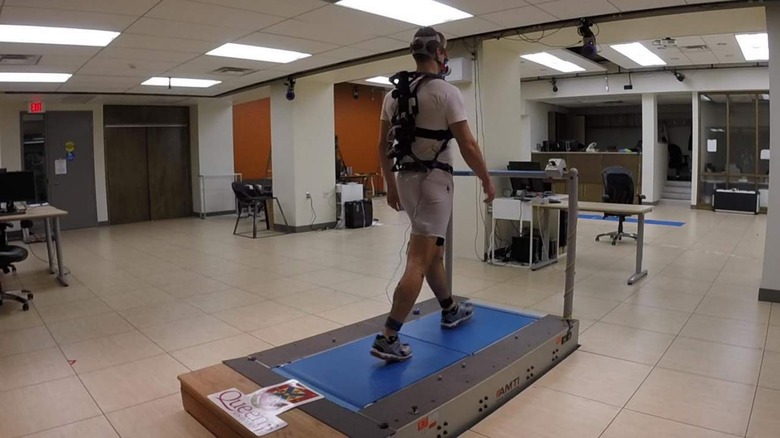Queen's University Researchers Created An Exoskeleton To Improve Walking Efficiency
Researchers from Queen's University have announced that an exoskeleton researchers designed to improve walking efficiency is the subject of a new study featured in a leading academic journal. Researchers say their exoskeleton is designed to improve the science of walking and the exoskeleton allows users to walk further using less energy. The exoskeleton was developed by a multidisciplinary team that included engineers and applied science researchers from the University.
The backpack-mounted prototype removes energy during a specific phase of the gait cycle to reduce the metabolic cost of walking. Researchers note that, unlike existing exoskeleton technologies that either add energy or transfer it from one phase of the gait cycle to another, the new device assists users by removing energy that helps the knee muscles during a critical moment in the gait cycle called the terminal swing phase.
The technology weighs just over half a kilogram. Researchers believe it will enable hikers to walk longer distances or help people on their feet a lot, such as caregivers and others, feel less tired after a long shift. While assisting the user, the exoskeleton can also convert the removed energy into electricity used to power the device's control systems and other portable devices.

Its energy harvesting capability could prove particularly useful for those walking long distances away from a traditional power supply, such as hikers or possibly even soldiers in the field. Creating the exoskeleton involved an interdisciplinary approach that focused on walking biomechanics, physiology, human-machine interactions, and design innovation. Most of the research was conducted in the Human Mobility Research Center, a Queens/Kingston Health Sciences Center facility equipped with what the team calls world-class gait analysis technology.
